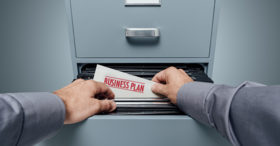Section 529 plans are a popular education-funding tool because of tax and other benefits. Two types are available: 1) prepaid tuition plans, and 2) savings plans. And one of these plans got even better under the Tax Cuts and Jobs Act (TCJA).
Enjoy valuable benefits
529 plans provide a tax-advantaged way to help pay for qualifying education expenses. First and foremost, although contributions aren’t deductible for federal purposes, plan assets can grow tax-deferred. In addition, some states offer tax incentives for contributing in the form of deductions or credits.
But that’s not all. 529 plans also usually offer high contribution limits. And there are no income limits for contributing.
Lock in current tuition rates
With a 529 prepaid tuition plan, if your contract is for four years of tuition, tuition is guaranteed regardless of its cost at the time the beneficiary actually attends the school. This can provide substantial savings if you invest when the child is still very young.
One downside is that there’s uncertainty in how benefits will be applied if the beneficiary attends a different school. Another is that the plan doesn’t cover costs other than tuition, such as room and board.
Fund more than just college tuition
A 529 savings plan can be used to pay a student’s expenses at most postsecondary educational institutions. Distributions used to pay qualified expenses (such as tuition, mandatory fees, books, supplies, computer equipment, software, Internet service and, generally, room and board) are income-tax-free for federal purposes and typically for state purposes as well, thus making the tax deferral a permanent savings.
In addition, the Tax Cuts and Jobs Act expands the definition of qualified expenses to generally include elementary and secondary school tuition. However, tax-free distributions used for such tuition are limited to $10,000 per year.
The biggest downside may be that you don’t have direct control over investment decisions; you’re limited to the options the plan offers. Additionally, for funds already in the plan, you can make changes to your investment options only twice during the year or when you change beneficiaries.
But each time you make a contribution to a 529 savings plan, you can select a different option for that contribution, regardless of how many times you contribute throughout the year. And every 12 months you can make a tax-free rollover to a different 529 plan for the same child.
Picking your plan
Both prepaid tuition plans and savings plans offer attractive benefits. We can help you determine which one is a better fit for you or explore other tax-advantaged education-funding options. Contact us at 205-345-9898.
© 2018 Covenant CPA








